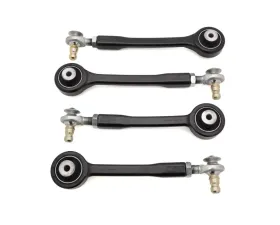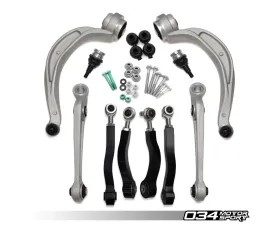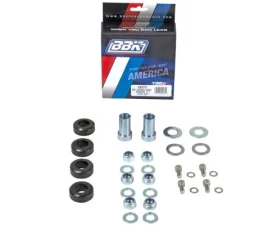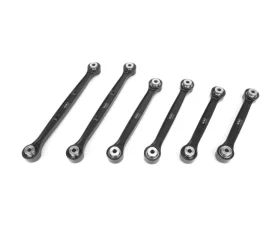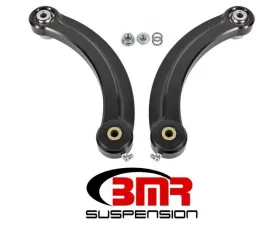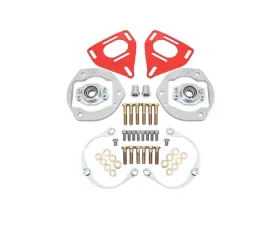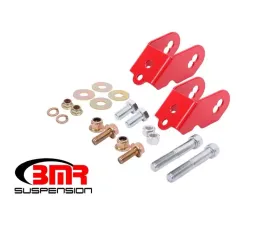Camber Adjustment Parts
Enhance your vehicle's handling and performance with our premium camber adjustment parts at Vivid Racing. Designed for automotive enthusiasts, these precision-engineered components allow for optimal tire contact and improved cornering stability. Whether you're hitting the track or fine-tuning your ride for daily driving, our selection ensures you achieve the perfect alignment for maximum grip and control. Upgrade your suspension setup today and experience the difference in your driving dynamics.
034 Motorsports B9 Upper Adjustable Control Arms - Camber Correcting for Audi A4/S4/A5/S5 2016-2022
034 Motorsports Density Line Adjustable Upper Control Arm Kit for Audi B8 A4/S4/A5/S5/Q5
034 Motorsports Density Line Control Arm Kit Upper Adjustable M12 for Audi B8/B8.5, C7/C7.5 & Porsche 95B Macan
034 Motorsports Density Line Control Arm Kit Upper Adjustable M14 - Audi B8/B8.5, C7/C7.5, Porsche 95B Macan
034 Motorsport Dynamic+ Camber Toe Kit Audi R8 V8 | V10 2006-2015
BMR Suspension Billet Adjustable Camber Links w/ Delrin Bushings Ford Mustang 2015-2020
BMR Suspension Billet Aluminum Adjustable Camber Links - Poly/Rod Ends Ford Mustang 2015-2022
BMR Suspension Black Hammertone Caster Camber Plates Ford Mustang 1990-1993
BMR Suspension Black Hammertone Caster/Camber Plates w/ Lockout Plates Chevrolet Camaro | Pontiac Firebird 1982-1992
BMR Suspension Camber Bolts Rear 1 Degree Offset Pontiac G8 2008-2009 | Chevrolet Camaro 2010-2015
BMR Suspension Camber Bolts, Front, 2.5 Degrees Offset Ford Mustang 2015-2022
BMR Suspension Camber Link Fixed Delrin/Bearing Billet Aluminum Ford Mustang 2015-2022
BMR Suspension Camber Link Fixed Poly/Bearing Billet Aluminum Ford Mustang 2015-2022
BMR Suspension Factory Spring, Caster Camber Plates Chevrolet Camaro 6th Gen 2016-2024
BMR Suspension Factory Spring, Caster Camber Plates Chevrolet Camaro 6th Gen 2016-2024
BMR Suspension Rear Camber Adjustment Lockout Kit (Black) Ford Mustang 2015-2022
BMR Suspension Rear Camber Adjustment Lockout Kit (Red) Ford Mustang 2015-2022

What are Camber Bolts and How do They Work?
Camber bolts are a cost-effective way to adjust camber easily, and in some cases, they are the only way you can operate under the class rules. The camber bolts are eccentric, i.e. they have an off-centered lobe that alters the horizontal position of the knuckle slightly from the strut, thus changing the camber angle.
Camber bolts are also referred to as "crash bolts" because they are used to align cars that have been bent in an accident. Due to their design, they are thinner than standard bolts and can be weaker than standard bolts. For this reason, it is important to ensure that camber bolts are of high quality and are produced by a reputable manufacturer.
It is important to note that the amount of negative camber increases when you lower the vehicle's driving height. How much it is increased depends on the vehicle and also on how dramatically its driving height has been reduced. For this reason alone, camber adjustment bolts are a simple but very effective method of removing excessive camber on lowered vehicles.
What is a Camber?
Camber is the angle at which the wheel and the tire stand relative to the road – assuming that it is completely flat. The easiest way to see what the camber looks like is to see the wheel and the tire head on. When stationary, the tire maintains a static camber angle, while when the car corners, due to body roll, the contact patch is reduced. In order to counteract this effect and have the greatest amount of tire on the road while cornering, the camber settings must be taken into account and adjusted accordingly.
While conventional thinking might lead one to believe that the wheel is perfectly perpendicular to the road on which it sits, it is often intentionally tilted slightly to counteract the forces imparted on it by cornering. If the top of the tire is leaned in closer to the center of the car, that particular wheel and tire exhibit what is called negative camber. Positive camber, on the other hand, has the top of the wheel pointed outwards. This arrangement is quite prolific in the tuning scene.
How Can the Right Camber be Determined?
Determining what camber setting produces an evenly applied contact patch can be done by measuring the heat inside, center and outside of the tire contact patch. By using a special thermometer called a pyrometer, one can determine whether one side of the tire is heated more or less than the other. While you may be tempted to use a non-contact thermometer, only the surface temperature of the tire can be misleading. Rapid tire cooling and the disproportional effect of the last turn or turn the car has just been driving does not provide a record of how the tires have been running through several laps, the way a pyrometer can.
Camber is something that should not be overlooked for anyone seriously considering the performance potential or their car. The feeling of increased grip and poise in the middle corner is something that's sure to put an ear-to-ear grin on anyone's face. Because most street cars are not designed with the race track in mind, their camber settings are somewhat conservative in order to ensure even tire wear in normal driving conditions.
Minute camber adjustments can make the standard car much more agile. As we have learned, when considering suspension adjustments, it is important to take into account your suspension design, but more importantly; use a scientific approach to determine what kind of camber is appropriate for your car. Although the addition of some negative camber can lead to higher cornering speeds and a more progressive feeling at the adhesion limit, it can lead to premature wear of tires, while improperly adjusted camber can lead to instability and reduced traction.
Buying from Vivid Racing is the best choice you can make. We back every part we sell with our guarantee of satisfaction. Hands-On Experience and Professionalism is what makes us the best.
Buy online or give one of our world-class sales professionals a call at 1-480-966-3040 If you don't see what you are looking for.

.jpeg?q=90&p=thumb&w=200&h=200)
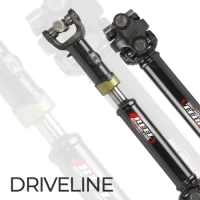









.jpeg?q=90&p=thumb&w=40&h=40) Brakes
Brakes  Driveline
Driveline  Electronics
Electronics  Handlebars & Controls
Handlebars & Controls  Package Deals
Package Deals  Wheel Accessories
Wheel Accessories  Wheels by Vehicle
Wheels by Vehicle  Universal & Repair
Universal & Repair  Vivid Racing Gear
Vivid Racing Gear 